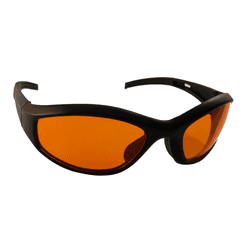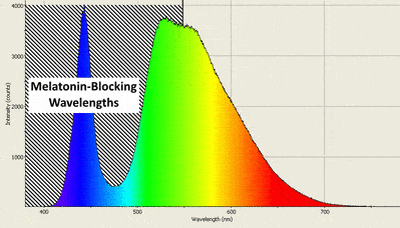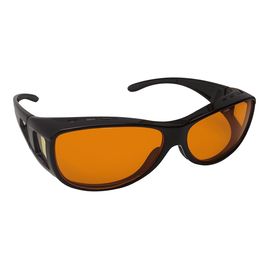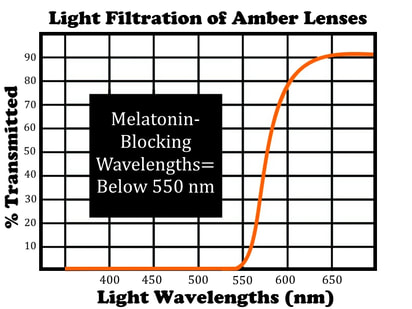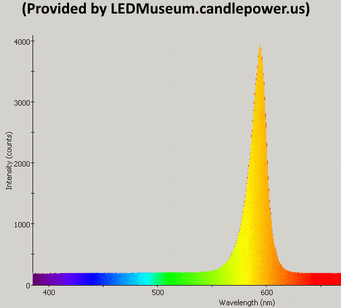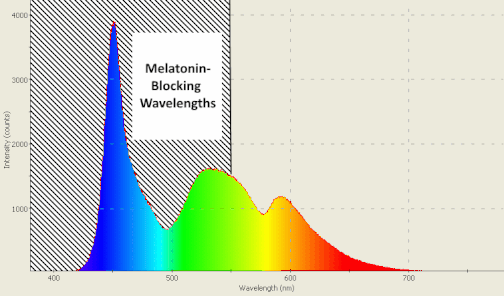Night Shift Glasses: Blue Light and Shift Work Sleep Disorder
“A reduction of the blue portion in artificial light during night-time hours could protect shift workers against disorders such as cancer and cardiovascular disorders as well as reduce sleep disturbances and their consequences among the general population.” -Kunz, qtd in Holzman 27.
Night Shift Work, Melatonin, and Health
Sleep deprived workers are necessarily prone to an increased risk of workplace accidents, but research shows that night shift workers face these occupational hazards at nearly three times the national rate. The constant barrage of bright blue-frequency light in late-night work environments has been proven to drastically lower melatonin levels and significantly disrupt sleep patterns (Link: See Light and Melatonin). According to a 2013 study, “Nearly a 3-fold increased risk of occupational accidents has been reported in shift workers compared with day workers, with increased risk of accidents reported in healthcare workers, police, and commercial drivers, and in all shift workers on the job and during the commute home” (Wright, Bogan, and Wyatt). These disruptions of sleep and melatonin can be hazardous for more than one reason. In addition to a 300% increase in workplace accidents, shift workers also face significantly higher rates of diabetes, depression, and cancer. These increased health risks among shift workers have become collectively known as Shift Work Disorder or Shift Work Sleep Disorder. In fact, a 2005 meta-analysis of 13 independent observational studies in the European Journal of Cancer found that female shift workers had a “48% increase in the risk of breast cancer” (Link: see Melatonin and Cancer).
Blue Blocking Glasses Increase Melatonin Production in Shift Workers
Luckily, many of these hazards have been traced to a single, correctable problem: melatonin deficiency. According to numerous studies, blue blocking night shift glasses may hold the key to correcting dangerous melatonin deficiencies and ameliorating these troubling health trends. A 2005 study examined the effect of blue light blocking glasses on night shift workers, and found that “wearing the light-filtering goggles, which block wavelengths of less than 530 nm, results in close to normal melatonin onset and peak secretion in subjects during nighttime exposure to bright light.” To the extent that sleep deprivation, occupational accidents, and cancer risks are caused or exacerbated by melatonin deficiency, these same problems can be improved by wearing blue blocking glasses and the resultant normalization of melatonin production.
Amber Melatonin Glasses Improve Sleep for Shift Workers
A 2009 experiment concluded that wearing amber glasses can improve sleep duration, sleep efficiency, and overall sleep quality in shift workers. Subjects who wore the amber glasses for 2 hours at the end of their shift were able to fall asleep, on average, 34 minutes faster, improved sleep efficacy by 4.56%, and reduced their sleep fragmentation by 4.22% (Sasseville, Benhaberou-Brun, Fontaine, Charon, and Hebert, 2009). The study concluded that, “improving light exposure at night plus wearing blue-blockers in the morning could represent a simple and elegant means to improve the daytime sleep of many permanent night workers.”
Blue Blocking Night Shift Glasses Found to be Safe
In addition to normalizing sleep patterns, performance tests found that this increase in melatonin production did not interfere with worker concentration or attention. The researchers conclude: “Our performance data (CPT) have demonstrated that the blocking of short-wavelength light does not interfere with attention span, concentration, or response accuracy. This evidence does not support the widely held view that melatonin is exclusively a sleep-promoting agent because our goggles helped maintain normal melatonin levels, and yet subjects showed no evidence of reduced performance… these findings suggest that strategies designed to preserve normal melatonin secretion produce few, if any, impairments in neurobehavioral functions and are unlikely to negatively affect on the job performance.” (Kayumov, Casper, Hawa, Perelman, Chung, Sokalsky, and Shapiro). In other words, wearing blue blocking glasses before bed can help normalize melatonin production and circadian rhythms without disturbing productivity or workplace safety.
Switching to Amber Light at Night
For those without control of their nighttime environment, particularly shift workers, amber glasses are almost certainly the best solution to sleep irregularities, melatonin deficiency, and related health concerns. However, for those with control of their nighttime lighting environment, switching to amber light sources has been shown to have the same positive effects as blue light blocking glasses. According to a 2013 study, “Similar to photosensitive paper, which is not affected by red light in the photographer's darkroom, the body's circadian system is minimally affected by red light in the environment because ipRGC in the retina are not receptive to red light” (Ellis, Gonzalez, McEachron). Indeed, as numerous studies demonstrate, it is almost exclusively blue and blue-green wavelengths of light that block melatonin production and disrupt sleep patterns. Like blue blocking glasses, nighttime use of red or amber light sources have been proven to allow normal melatonin production and encourage normalized sleep patterns, managing or in many cases correcting common sleep disorders.
Learn more about: Blue Light and Insomnia, ADD Insomnia, Bipolar Insomnia, and Melatonin and Cancer.
Purchase blue-light blocking night shift glasses, fitover night shift goggles, red night lights, and amber sleep lamps here.
Learn more about: Blue Light and Insomnia, ADD Insomnia, Bipolar Insomnia, and Melatonin and Cancer.
Purchase blue-light blocking night shift glasses, fitover night shift goggles, red night lights, and amber sleep lamps here.
Sources:
Ellis, E.V., Gonzales, E.W., and McEachron, D.L. (2013). Chronobioengineering indoor lighting to enhance facilities for ageing and Alzheimer’s disorder. Intelligent Buildings International, 5, 48-60
Kayumov, L., Casper, R., Hawa, R., Perelman, B., Chung, S., Sokalsky, S., and Shapiro, C. (2005). Blocking Low-Wavelength Light Prevents Nocturnal Melatonin Suppression with No Adverse Effect on Performance during Simulated Shift Work. Journal of Clinical Endocrinology & Metabolism, 90 (5), 2755-2761
Sasseille, A., Benhaberou-Brun, D., Fontaine, C., Charon, M., and Hebert, M. (2009). Wearing Blue-Blockers in the morning could improve sleep of workers on a permanent night schedule: A pilot study. Chronobiology International, 26 (5), 913-925
Wright, K., Bogan, R., and Wyatt, J. (2013). Shift work and the assessment and management of shift work disorder (SWD). Sleep Medicine Reviews, 17. 41-54
Ellis, E.V., Gonzales, E.W., and McEachron, D.L. (2013). Chronobioengineering indoor lighting to enhance facilities for ageing and Alzheimer’s disorder. Intelligent Buildings International, 5, 48-60
Kayumov, L., Casper, R., Hawa, R., Perelman, B., Chung, S., Sokalsky, S., and Shapiro, C. (2005). Blocking Low-Wavelength Light Prevents Nocturnal Melatonin Suppression with No Adverse Effect on Performance during Simulated Shift Work. Journal of Clinical Endocrinology & Metabolism, 90 (5), 2755-2761
Sasseille, A., Benhaberou-Brun, D., Fontaine, C., Charon, M., and Hebert, M. (2009). Wearing Blue-Blockers in the morning could improve sleep of workers on a permanent night schedule: A pilot study. Chronobiology International, 26 (5), 913-925
Wright, K., Bogan, R., and Wyatt, J. (2013). Shift work and the assessment and management of shift work disorder (SWD). Sleep Medicine Reviews, 17. 41-54
